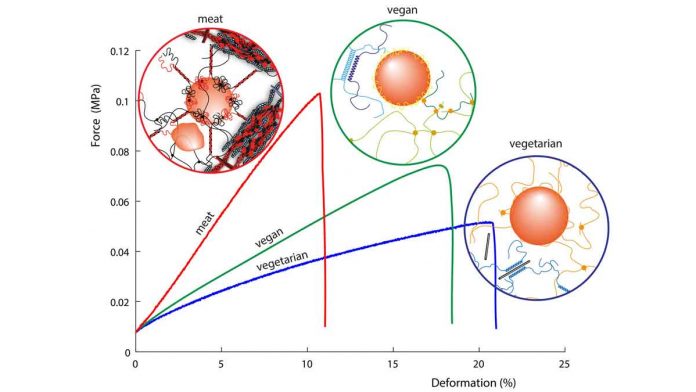Plant-based meat surrogates have been the rage for some time. “Impossible” has become a buzzword to tout everything from vegetarian burgers at fast food chains to meatless alternatives in grocery store aisles. Modern methods of biotechnology, food technology and process engineering can yield high optical similarities and targeted molecular-sensory methods that can largely approximate appearance, taste and smell.
On a molecular scale, plant-based meat appears completely different from the food it tries to mimic. It is noticeable in various ways. The paper was published in Physics of Fluids. Germany is a country that produces more than 1,200 types of sausages. Scientists investigated the molecular function and effects of vegetable proteins of different origins to identify sensory weak points in plant-based meat substitutes.
Scientists said muscle proteins emulsify fats and oils in a very different way than plant proteins do while lending to a different biting behaviour in the mouth.
Scientists employed rheology and tribology in molecular models, in addition to tensile experiments. They brought greater insight than pure sensory analyses to examine meat sausages and their vegetarian surrogates.
The study represents an entirely new approach to experimental food science, building on the authors’ previous research of soft matter theory and theoretical polymer physics.

